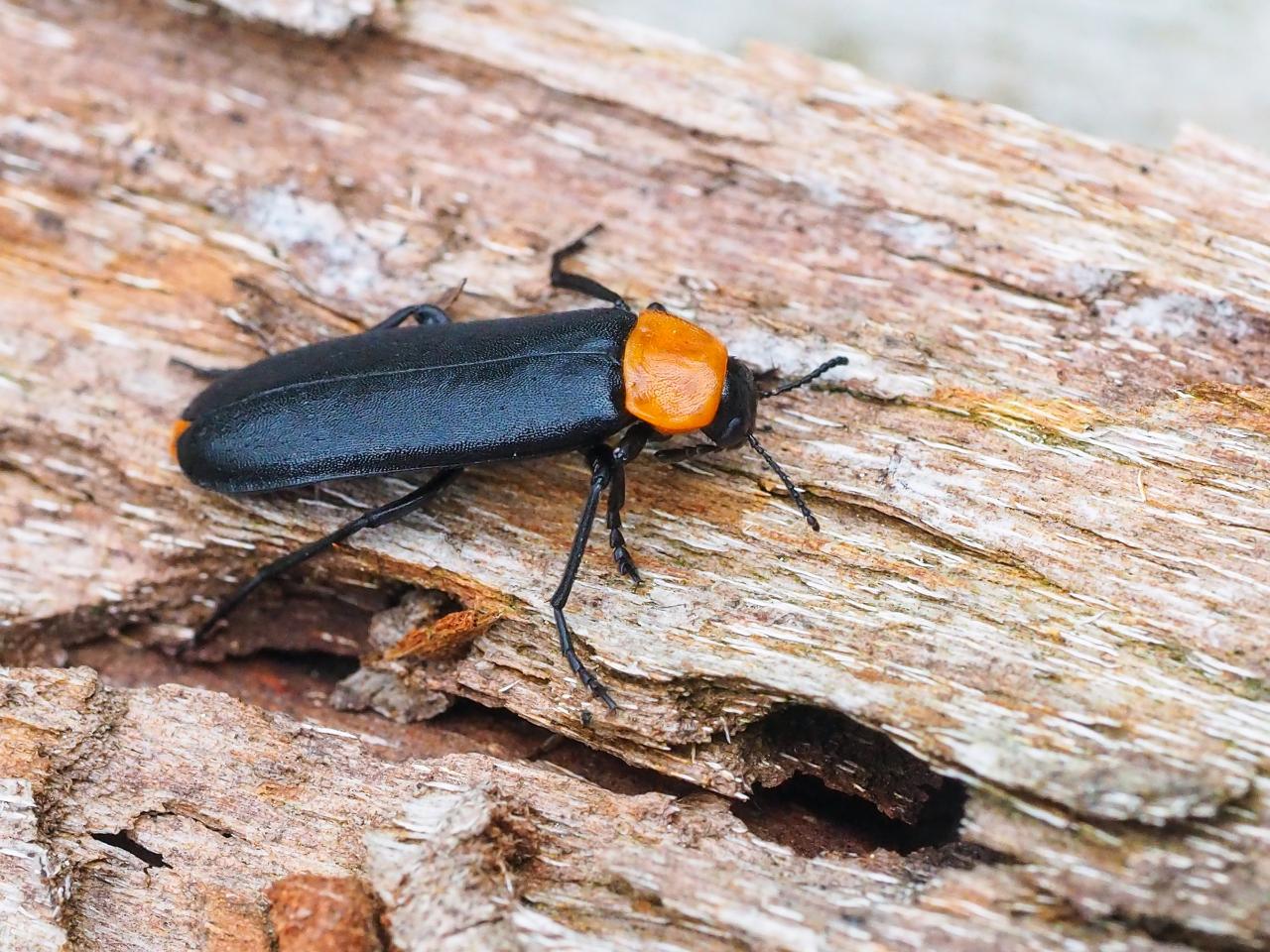National Park zoologist Erich Weigand made an extraordinary beetle discovery in the World Heritage beech forest at Kalkalpen National Park. With the discovery of the "red-necked dusky beetle", Phyrganophilus ruficollis in Latin, the Kalkalpen National Park is now demonstrably home to one of the rarest beetle species in Europe.
One of the rarest beetle species in Europe lives in the Kalkalpen National Park
Red-necked dusky beetle
This is a category one primeval forest relict species, which is under priority protection in the European Union's Flora-Fauna-Habitat Directive. "So far, only a few isolated finds have been confirmed for the Eastern Alps, including one from Upper Austria 119 years ago in Trattenbach in the municipality of Ternberg," said biologists Andreas Eckelt from the Innsbruck Museum, Gregor Degaspari from Tyrol and consultant Heinz Mitter from Ansfelden, who specialize in the local beetle fauna. The last discovery in Austria was over 40 years ago.
32 individuals sighted
During in-depth research, the beetle researchers were able to spot the red-necked dusky beetle at two further avalanche tracks in the Bodinggraben with a total of 32 individuals, thus confirming the first larger population in the Eastern Alps. The next known population is located in a primeval forest, in the Białowieża National Park, in Poland and Belarus.
New findings
In the course of the surveys in the national park, fundamental new insights were also gained into the biology and life requirements of this species. For example, the fully developed, sexually mature beetle was previously only known to be two weeks old, but Andreas Eckelt has now been able to determine that it is at least four weeks old. The decisive factor for its occurrence is not so much a tree species, but rather the substrate quality, i.e. the specific wood decomposition process on the dead wood. The highest proportion of primeval forest relict species can be found in the untouched forest areas in the World Heritage Beech Forest, where the trees have been able to develop naturally over centuries. For example, well-known species such as the alpine longhorn beetle (Rosalia alpina) or the scarlet longhorn beetle (Cucujus cinnaberinus) live here, as well as many unknown species such as the orange-spotted darkling beetle (Dircaea australis), a species that is only found in the last remaining primeval forests in Europe. The animals require heavily dimensioned, white rotten beech or elm deadwood in a sunny location for their perennial development. The majority of these primeval forest relicts are dependent on tree fungi, which have also often become very rare, for their survival.
Habitat of the red-necked dusky beetle
Deadwood fauna as an important basis
In order to preserve Austria's natural heritage and its species, the protection of original and old forests is therefore a priority, as this is precisely where the most endangered forest organisms can still be found. "With this sensational discovery, the number of primeval forest relict species in forest national park Kalkalpen has risen to 41 known species," says National Park Director Josef Forstinger. "In no other forest area in the Eastern Alps, which is made up of the most widespread indicator tree species copper beech, spruce and fir, are there currently anywhere near as many relicts confirmed." With this diversity and quality of the existing deadwood fauna, the Kalkalpen National Park is today one of the most important near-natural forests in Central Europe and one of the most important refugial areas of a highly endangered and primeval Central European forest fauna. The discovery once again highlights the urgency and importance of further restoration of old and original forest habitats.



